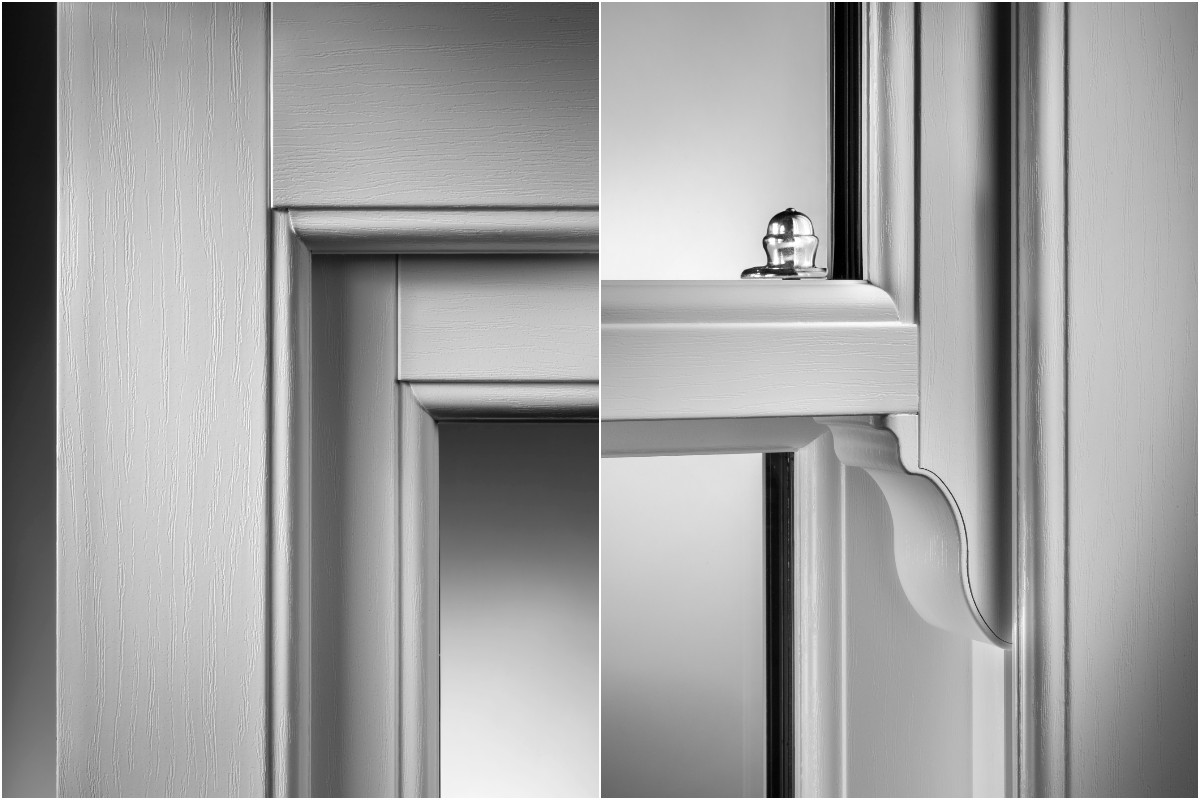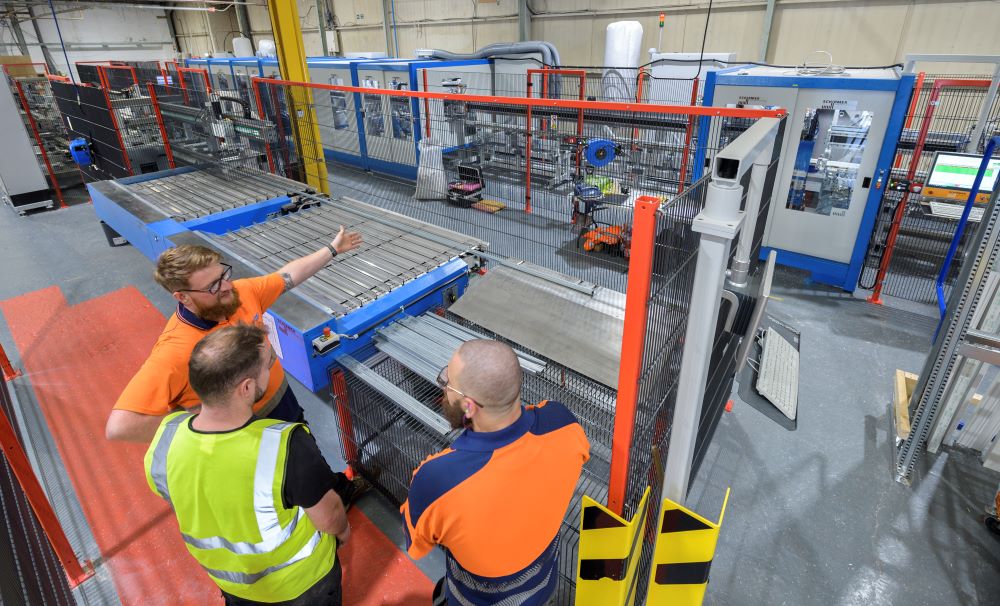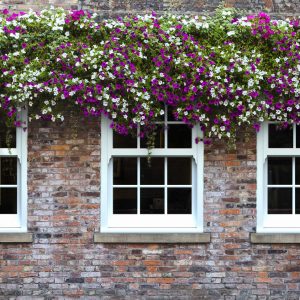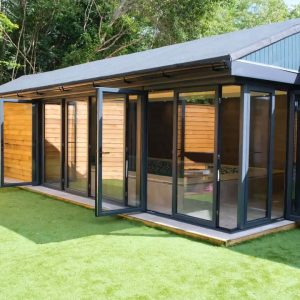Comparing uPVC Sash Windows vs Wooden Double Glazed Sash Windows
Share this story!
Share this post to any popular social media, email it to a friend or print it off.
When considering sash windows for your home, the choice between uPVC and wooden sash windows can be challenging. Both materials offer unique advantages and drawbacks, which can impact the aesthetic, performance, and value of your property. This article delves into a comprehensive comparison of uPVC double glazed sash windows and wooden double glazed sash windows to help you make an informed decision.
Heritage Appeal

uPVC Double Glazed Sash Windows
uPVC sliding sash windows have come a long way in terms of design. Modern uPVC can mimic the appearance of traditional wood, offering a variety of finishes and colours. Here at Quickslide, we offer a range of upgrades to our uPVC sliding sash windows to effortlessly replicate traditional timber frames. Features like a deep bottom rail, mechanical joints, and our new 37mm slim midrail all combine to make a truly authentic looking sash window.

Wooden Sash Windows
Timber double glazed sash windows are often regarded as the epitome of traditional elegance. Timber offers a natural, timeless beauty that can enhance the aesthetic appeal of period properties and contemporary homes alike. The texture, grain, and traditional appearance of wood can be difficult to replicate with modern synthetic materials, but our woodgrain foils can easily replicate timber in a range of colours from greys and greens to browns. With Quickslide, you can get a reliable supply of authentic wooden sash window replacements with our Legacy uPVC range.
Painted sash windows made from timber can easily be repainted, but the paint can fade, chip, or crack just as easily. Meanwhile, the uPVC Legacy sash window by Quickslide can maintain its vibrancy for years to come without the need for repainting or coating.
Energy Efficiency
uPVC Sash Windows
uPVC windows typically offer excellent thermal insulation. They often come with multi-chambered profiles and advanced glazing options, such as double glazing and the use of argon gas, which contribute to better energy efficiency. At Quickslide, we implement argon gas and specialised frames to insulate sash windows to an energy rating of ‘A’. Argon gas is denser and doesn’t conduct heat as well as air, so it’s an excellent insulator to be used between panes of glass. This can result in lower heating bills and a more comfortable living environment.
Another benefit of such insulation is that soundproof sash windows, or sound resisant windows, are now much more possible compared to old sash windows made of aging timber.
We recently introduced an upgrade that allows us to offer an incredible 1.2 U-value on our sliding sash windows, so they’re even more energy efficient than before!
Wooden Sash Windows
Wood is a natural insulator, and well-constructed wooden double glazing sash windows can provide good thermal performance. However, the energy efficiency of wooden windows largely depends on the quality of the seals and glazing. Double glazed wooden sash windows can be as energy-efficient as their uPVC counterparts, but this may come at a higher cost.
Traditionally, timber windows are single glazed, but upgrading to double glazing hugely improves energy efficiency and is now a requirement for any new or replacement windows.
Durability and Maintenance
uPVC Sash Windows
- Highly resistant to weathering
- Immune to rot and corrosion
- Not susceptible to pest infestations
- Long-lasting and structurally stable
- Requires minimal upkeep
- Regular soapy water cleaning keeps them fresh
- No need for sanding, painting, or staining
uPVC windows are highly durable and resistant to weathering, rot, and pests. They require minimal maintenance – just regular cleaning with soapy water to keep them looking fresh. uPVC does not need sanding, painting or staining, making it a convenient option for homeowners seeking low-maintenance solutions.
We recently put together a handy maintenance guide for our sash windows, check it out here: Ways To Maintain Sliding Sash Windows.
Wooden Sash Windows
- Robust and long-lasting with proper care
- Susceptible to environmental factors like moisture and pests
- Modern treatments enhance longevity but not to uPVC’s level
- Requires regular upkeep
- Needs painting or staining every few years
While timber is robust and can last for many years with proper care, it is more susceptible to environmental factors. Wooden sash windows need regular maintenance, including painting or staining every few years to protect against moisture, rot, and insect damage. However, modern treatments and finishes can significantly enhance the longevity and durability of wooden frames, but often not to the extent of modern uPVC frames.
Ease of Manufacturing

uPVC Sash Windows
Modern technology makes uPVC the obvious choice for fabrication. Quickslide invests heavily in top-of-the-line machinery to improve and streamline the manufacturing process in our Brighouse factory. Just last year, we invested over 1.7 million in a brand-new state of the art machining centre to help us continue to improve standardised excellent quality, lead times, production capacity, and efficiency.
Automation can minimise human error and ensure consistently high-quality standards. With precision cutting handled by the machining centre, our skilled team can concentrate on the fabrication processes that require their expert touch.

Wooden Sash Windows
Timber windows are typically more complex to manufacture, as they use traditional joinery methods, which are more time-consuming and labour-intensive. Timber must also be properly treated to ensure stability and durability, which adds additional steps to the manufacturing process. The quality of the wood and the precision of the cuts are critical, requiring experienced craftsmen.
The joinery process for wood sash double glazed windows is intricate and requires a high level of precision. Finishing involves sanding, painting, or staining, which can come at the cost of longer production times and increased workloads for a manufacturing team.
Double Glazed Sash Windows Cost
uPVC Sash Windows
uPVC windows typically offer a more affordable option both in terms of initial purchase and long-term maintenance. The production of uPVC sliding sash windows involves highly automated processes that reduce labour costs and increase efficiency, resulting in lower manufacturing expenses.
Additionally, once purchased and fitted, uPVC windows require very minimal upkeep – we recommend wiping with soap and hot water every six months. uPVC frames will not need periodic painting or staining. This ease of maintenance translates to lower long-term costs, making uPVC sash windows a cost-effective choice for budget-conscious homeowners.
Wooden Sash Windows
Wooden sash windows generally come with a higher initial price tag due to the cost of high-quality timber and the craftsmanship involved in their construction. Maintaining wooden windows can be more expensive and time-consuming, as they need regular painting or staining to protect against weathering and damage.
While wooden sash windows can add significant aesthetic and historical value to a property, their higher purchase and maintenance costs can make them a less economical option compared to uPVC.
Composite Sash Windows
Composite sash windows are often seen as a middle ground between uPVC and timber, combining a timber core with an external layer of uPVC. This provides the aesthetic appeal and strength of wood while benefiting from the low maintenance and weather resistance of uPVC.
While composite windows may seem like a better choice than uPVC, they have many drawbacks that prove uPVC sash windows to be the superior option for UK homes.
Cost
Composite sash windows are typically more expensive than their uPVC counterparts. The high-quality materials and advanced manufacturing processes involved in their production contribute to this higher cost, making them less accessible for budget-conscious homeowners.
Complex Repairs
Due to the combination of materials used in composite windows, repairs can be more complex and costly. Finding matching components for repairs can be challenging, and specialised expertise might be required, increasing maintenance expenses.
Weight
Composite windows can be heavier than uPVC or wooden windows, often needing stronger frames and tougher installation processes. This added weight can also make them more difficult to operate, especially in larger sizes.
Environmental Impact
The production of composite windows often involves the use of synthetic materials and chemicals, which can have a higher environmental impact compared to natural wood. Additionally, the recycling process for composite materials is more complex and less established than for other materials like uPVC.
You May Also Be Interested In:
- Traditional Box Sash Windows
- Can You Double Glaze Sash Windows?
- What is a Horn on a Sash Window?
- Sash Window Colour Choices
- Energy Efficient uPVC Sash Windows

Please note, our news articles are relevant and accurate at the time of release, but as technical developments dictate, and times goes by the information in this article may no longer be applicable. If you have questions, please contact us using our online contact form or call us on 03332 412 240.



